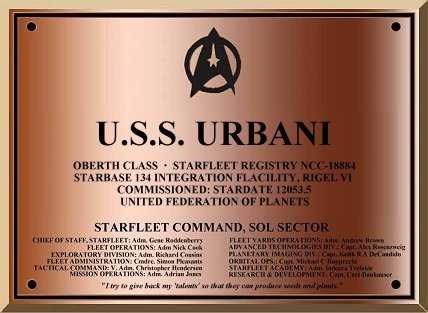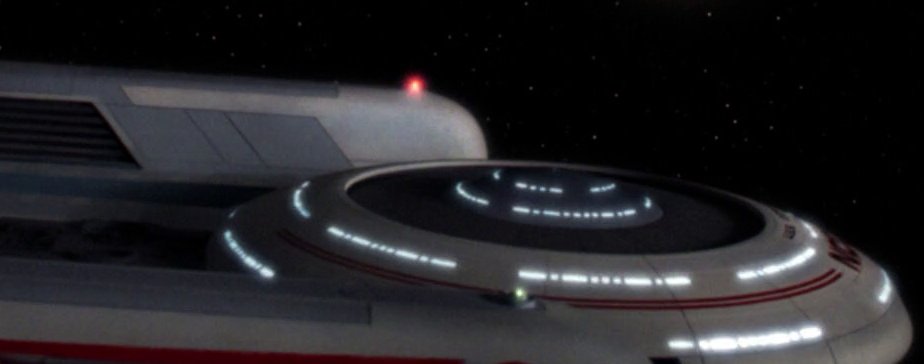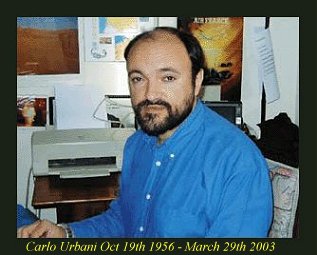
 Captain's log, Stardate 12193.5. Commander George Walker commanding. We arrived at Vaarati V in the Beta Quadrant earlier this morning. Probes launched earlier suggest there may be possible signs of civilisation on this planet, so we are proceeding with caution, to avoid Prime Directive issues.
Captain's log, Stardate 12193.5. Commander George Walker commanding. We arrived at Vaarati V in the Beta Quadrant earlier this morning. Probes launched earlier suggest there may be possible signs of civilisation on this planet, so we are proceeding with caution, to avoid Prime Directive issues.
Captain's log supplemental: Ruins have been discovered in the mountainous region on the largest southern continent. Scans suggest that these ruins have lain like this for thousands of years. Sensor scans suggest we aren't the first to arrive here: there are signs of campfires and recent humanoid tracks. Ensign Short seems to have found a site used by shuttles. I wonder if we are dealing with archeologists, tomb raiders or something else? I shall keep Starfleet Command informed.
Lieutenant [j.g.] Simonov beamed down into a rocky landscape, his archeological instincts dying to kick in. His experience and command skills held back his eagerness, tempering his zealousness with caution. Lt. Simonov gestured to his two security guards to spread out and secure the area. Drawing their phasers they cautiously weaved through the rocks. Simonov unhooked his tricorder and conducted a 360 degree sweep. No readings for lifeforms.
Simonov and his team of six made it to the ruins approximately twenty minutes later. The ruins were a small settlement of one storey buildings of an old style. Once inside, it didn't take Lt. [j.g.] Simonov long to realise that the settlement had been stripped clean of artifacts. 'Tomb raiders.' he cursed under his breath. He was about to reach for his communicator when a glint from a pile of rubble outside caught his eye. Simonov walked over and reached into the rubble, pulling out a fragment of a flat, crystalline map. 'Curious', he remarked to no one in particular. The layout on the map was indecipherable, possibly being the layout of a large city, perhaps representing countries or even star sectors. This would require further studying. Simonov reported in before the four science officers accompanying him began to search more relics.
The final report from the ruins included few extra items, part of a possible musical instrument and a smooth egg-shaped crystal of green, which gave very strange readings when scanned by a tricorder.
Captain's log, stardate 12197.4. It seems we have ourselves a mystery here. Vaarati V would seem to present us with many questions and, so far, few answers. It is with great sadness that I report the loss of Petty Officer Lomax. Lomax was the crewman assigned to bring up the crystalling egg artifact discovered on the planet. A problem developed with his transporter pattern whilst he was being beamed up. His signal was lost, along with the egg. The other four transporting up at the same time were unharmed. I have ordered a full investigation into the accident and the transporter logs are to be copied to starbase 44 for further examination. I have also ordered everyone to be ultra-cautious with anything taken from, handled or touched from the planet below.
U.S.S. Urbani was launched from Starbase 134 integration facility at Rigel VI on stardate 12011.5. Her motto is: 'I try to give back my 'talents' so that they can produce seeds and plants'. She was commisioned on stardate 12053.5, one of a batch of Oberth class starships [18880 - 18889] that were produced in bulk over 2305. After a brief shakedown, the Urbani was assigned to Vaarati V to explore the ruins there. The mission is two years in duration, she is six months into that mission when contact is lost. It has been 72 hours...
Crew:
Officers: 20
N.C.O.'s: 59
Cruising Warp: 5.
Maximum warp: 6.
Starship primary mission: Planetary Exploration. [Usually probe follow-up missions].
Oberth class arrangement
Deck 1 Bridge, conference room, officer quarters, mess hall, lounge.
Deck 2 Shuttlebay upper deck. Enlisted crew quarters, gym, laundry, cargo bay.
Deck 3 Shuttlebay main deck, cargo bays, escape pod access, cryogenic tankage.
Deck 4 Sickbay, life sciences, transporter, main engineering, computer core, life support, waste recycling.
Deck 5 Deuterium tankage, jeffries tube to secondary hull
Deck 6 Deuterium tankage, jeffries tube to secondary hull, plasma flush vent
Deck 7 Deuterium tankage, jeffries tube to secondary hull, deflector generator, structural integrity.
Deck 8 Science/cartography sensor array, science labs, communication buoy magazine.
Deck 9 Science/cartography sensor array, science sensor processing compartment, buoy/torpedo/probe workshop,
Deck 10 Science/cartography sensor array, aft sensor compartment, life support, batteries.
Deck 11 Science/cartography sensor array, batteries.

 Carlo Urbani. On February 28 2003, the Vietnam French Hospital of Hanoi, a private hospital of about 60 beds, contacted the Hanoi office of the World Health Organization (WHO). A patient had presented with an unusual influenza-like virus. Hospital officials suspected an avian influenzavirus and asked whether someone from the WHO could take a look. Dr. Carlo Urbani, a specialist in infectious diseases, answered that call. In a matter of weeks, he and five other health care professionals would be dead from a previously unknown pathogen.
Carlo Urbani. On February 28 2003, the Vietnam French Hospital of Hanoi, a private hospital of about 60 beds, contacted the Hanoi office of the World Health Organization (WHO). A patient had presented with an unusual influenza-like virus. Hospital officials suspected an avian influenzavirus and asked whether someone from the WHO could take a look. Dr. Carlo Urbani, a specialist in infectious diseases, answered that call. In a matter of weeks, he and five other health care professionals would be dead from a previously unknown pathogen.
In 1999, Dr. Urbani was president of MSF–Italy and a member of the delegation in Oslo, Norway, that accepted the Nobel Peace Prize. Although he would be gratified that so much has been accomplished with respect to SARS in such a short time, he would certainly point out that the other diseases he worked with — such as the human immunodeficiency virus and AIDS, tuberculosis, and malaria, which kill millions of people each year — deserve to be treated with similar urgency. Whatever the future direction of SARS, it is clear that Dr. Urbani's decisive and determined intervention has bought precious time and saved lives. We remember Dr. Urbani with a mixture of pride in his selfless devotion to medicine and unspeakable grief about the void his departure has left in the hearts of his colleagues around the world.
Source Information
From Médecins sans Frontières (Doctors without Borders) U.S.A. (B.R.), Belgium (M.V.H.), Vietnam (D.S.), and Italy (N.D.)

Click on the above logo for MSF.
Author's Note: This starship is named in honour of Carlo Urbani and dedicated to his memory, to his wife Giuliana Chiorrini and children, to his friends and to the countless lives he saved. To quote UN Secretary General Kofi Annan: ‘A HERO -- IN THE BEST AND TRUEST SENSE OF WORD’.








 Captain's log, Stardate 12193.5. Commander George Walker commanding. We arrived at Vaarati V in the Beta Quadrant earlier this morning. Probes launched earlier suggest there may be possible signs of civilisation on this planet, so we are proceeding with caution, to avoid Prime Directive issues.
Captain's log, Stardate 12193.5. Commander George Walker commanding. We arrived at Vaarati V in the Beta Quadrant earlier this morning. Probes launched earlier suggest there may be possible signs of civilisation on this planet, so we are proceeding with caution, to avoid Prime Directive issues.
 Carlo Urbani. On February 28 2003, the Vietnam French Hospital of Hanoi, a private hospital of about 60 beds, contacted the Hanoi office of the World Health Organization (WHO). A patient had presented with an unusual influenza-like virus. Hospital officials suspected an avian influenzavirus and asked whether someone from the WHO could take a look. Dr. Carlo Urbani, a specialist in infectious diseases, answered that call. In a matter of weeks, he and five other health care professionals would be dead from a previously unknown pathogen.
Carlo Urbani. On February 28 2003, the Vietnam French Hospital of Hanoi, a private hospital of about 60 beds, contacted the Hanoi office of the World Health Organization (WHO). A patient had presented with an unusual influenza-like virus. Hospital officials suspected an avian influenzavirus and asked whether someone from the WHO could take a look. Dr. Carlo Urbani, a specialist in infectious diseases, answered that call. In a matter of weeks, he and five other health care professionals would be dead from a previously unknown pathogen. 





